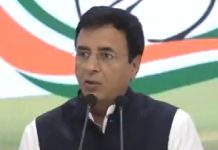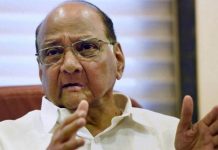
It has been a remarkable journey for a man, whom the media hated for a decade, and later projected him as a political poster-boy. For 13 years, Narendra Modi enjoyed a hate-love-hate bond with the news media. As the Gujarat chief minister, he was condemned, censured and criticised by journalists for the role that he and his key ministers, and the state’s police officials, played, or didn’t play, during the 2002 Gujarat riots. He developed a dislike for the liberal, secular journalists, especially in the mainstream media. He successfully proceeded to ‘gag’ the local Gujarati press.
During his poll campaign in 2014-15, Modi took on the hacks, and called them corrupt, pliable and biased. His public relations machinery went ballistic and painted them as being ‘negative’ towards the future prime minister. However, as his chances of electoral victory improved, he used it to his advantage. He urged the huge crowds at his rallies to show their excitement so that the TV channels and newspapers could capture the ‘real’ mood of the country.
But, at the same time, he went over the mainstream media’s head to speak directly to the people through social media, mobile, Internet, and outdoor advertising. The use of social networking sites, Twitter and Facebook, where he now has millions of followers, enabled him to woo the huge numbers of ‘first-time’ voters. Therefore, the media waited with bated breath to figure out what would PM Modi do after the BJP’s thumping majority in the Lower House in May 2014.
Hate-love-hate bond
The hate-love-hate relationship with the media continued. As PM, Modi lambasted the journalists several times. Once, he compared them to house flies, which ‘spread dirt’; he urged them to become like honeybees, which produce honey and also sting. The underlying message: the media needs to talk positively about the government, and pin prick it only occasionally. As one knows, the honeybee’s sting doesn’t hurt too much, unless a person is attacked by an entire colony.
Questioning the credibility of the media, Modi claimed that it asked questions only to get “pre-decided” answers. “In interviews, this is our experience…. In most of the interviews, the person asking questions has already decided on the answers,” he said in a speech to mark 21 years of Rajat Sharma’s TV show, Aap ki Adalat. NDA-II politicians consistently complained that the media has deliberately spread the falsehood that the regime’s land ordinance was anti-farmer.
However, when he first met the journalists informally at a Diwali Milan lunch, he praised them to the hilt. He credited the media with publicising the Swachh Bharat campaign. “You have turned the pen into a broom,” he said, and happily posed for selfies with a few hacks. His loyalists were elated that the press continued to cover NDA-II’s seminal schemes, such as ‘Make in India’, with enthusiasm and fervour. The caveat: Modi also cut off media’s access to ministers and officials; the journalists bitterly complained that no one, except the designated spokespersons, talked to them.
So, what is Modi’s ‘real’ attitude towards the press? What is his final objective vis-a-vis the media? How does he plan to deal with scribes? The one-line answer to these questions: Like any leader who has complete belief in himself, the PM hopes to use both State-owned and private media as propaganda tools. He wishes to make it so pliable that 90 percent of the news that they disseminate talk about the good things that the government has done.
To those who have observed Modi’s ‘Medianama’, the blueprint to achieve this aim is in place. While some of the strategies have been implemented, others are a work in progress. The vision covers all kinds of media institutions — Prasar Bharti (PB), Doordarshan (DD), All India Radio (AIR), private TV news channels, newspapers, social media and, even, Community Radio (CR). Over the past few months, Tehelka spoke to dozens of sources to flesh out Modi’s media strategy.
Public service media
Even before he became the PM, public broadcasters PB, DD and AIR were on Modi’s radar. Within months, he appointed A Surya Prakash, a veteran journalist, who earlier worked as a Fellow with the Vivekananda International Foundation (VIF) as chairperson, PB. VIF’s background is enough to underline the importance of this appointment. Its website claims that it is an “independent, non-partisan
institution” and a “New Delhi-based think tank set up… under the aegis of the Vivekananda Kendra.”
However, sources claim that VIF was “established by the Rashtriya Swayamsevak Sangh (RSS) organiser Eknath Ranade in 1970” and, therefore, has close links with the Sangh Parivar and the BJP. Modi’s proximity to the Foundation can be gauged from the fact that three other key members of Modi’s A-Team — Ajit Doval, national security adviser; Nripendra Mishra, principal secretary in the Prime Minister’s Office (PMO); and PK Mishra, additional principal secretary, PMO — were associated with it.
Prakash’s first task is to appropriate more powers. Sources contend that the government has agreed to amend the Prasar Bharati Act to take away some of the responsibilities from the chief executive officer, PB, and give them to the chairperson. The amendment may be introduced in the next session of Parliament. If passed, it will give Prakash an ‘almost-complete’ freedom to run PB as well as DD and AIR. The PMO has also approved the new chairperson’s ‘vision’ for public service media.
In his speeches, Prakash, who wrote a book that questioned Congress supremo Sonia Gandhi’s foreign origins, has said that he wants DD and AIR to become full-fledged and professional media institutions. He agreed that PB’s autonomy was “still a long way off” but felt confident that he can transform it into an “independent entity”. He warned that it was a “long process”. But given his links to VIF, and Modi’s fascination for those who worked for it, one has to possibly read between the lines.
PB’s head has invariably been a political appointee. The ruling regimes have controlled it because of the huge annual funds — almost Rs 2,500 crore last year — PB receives from the ministry of information and broadcasting (MIB). While global broadcasters spend 70 percent of their annual budgets on ‘programming and content’, the figure is a mere 15 percent for DD and AIR. Therefore, while Prakash may professionalise’ the two, the emerging content may continue to toe the government’s line.











